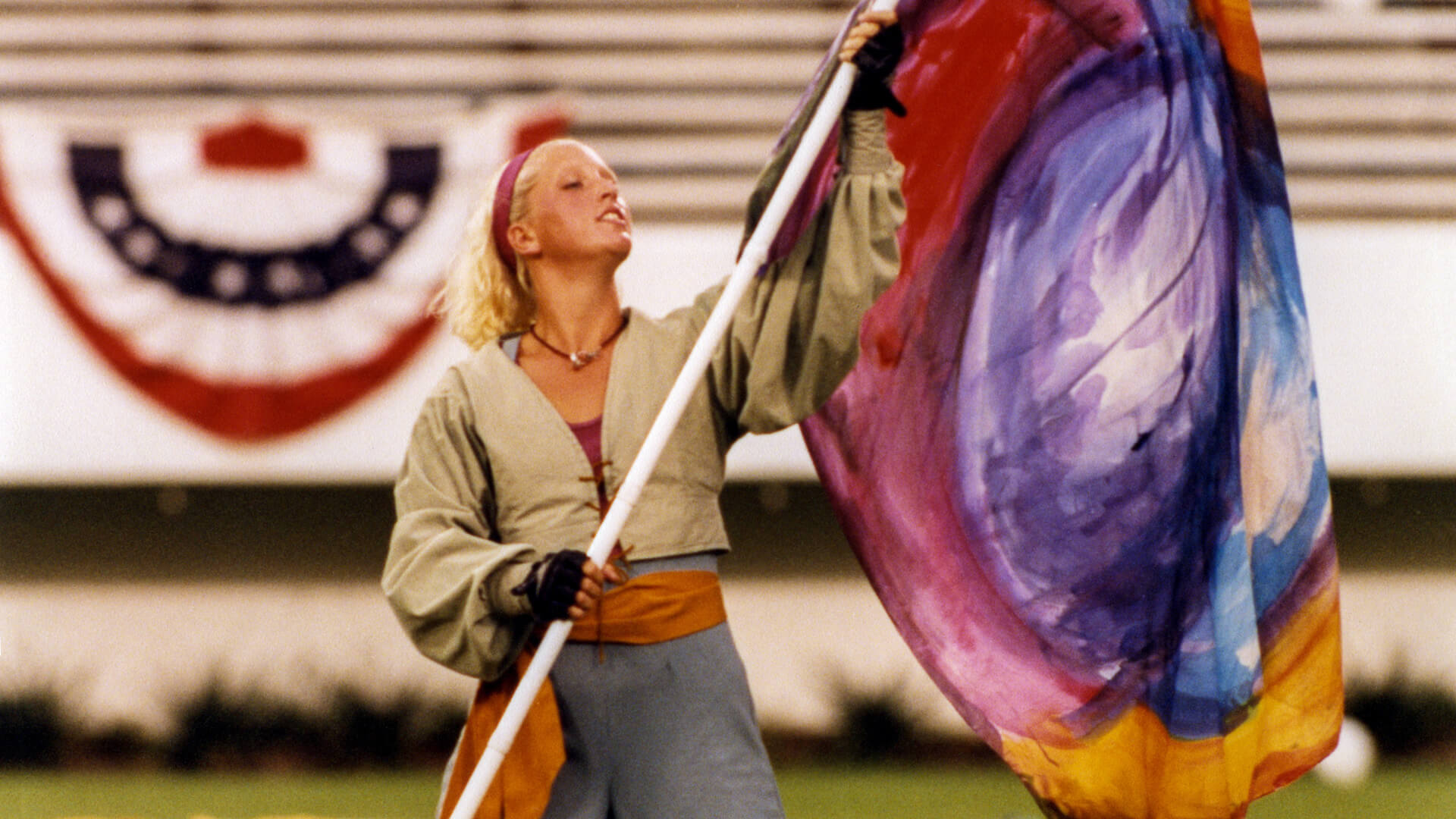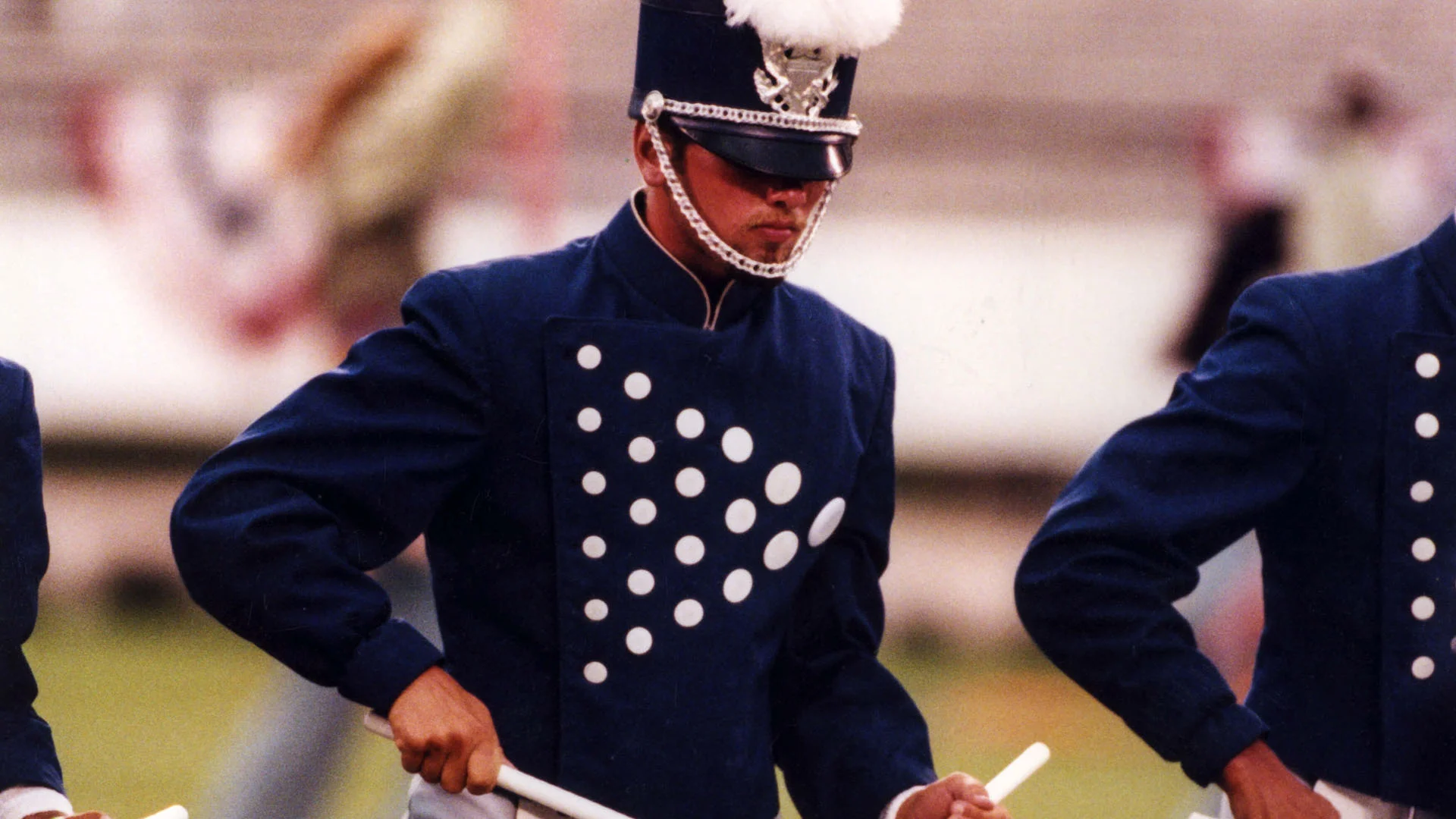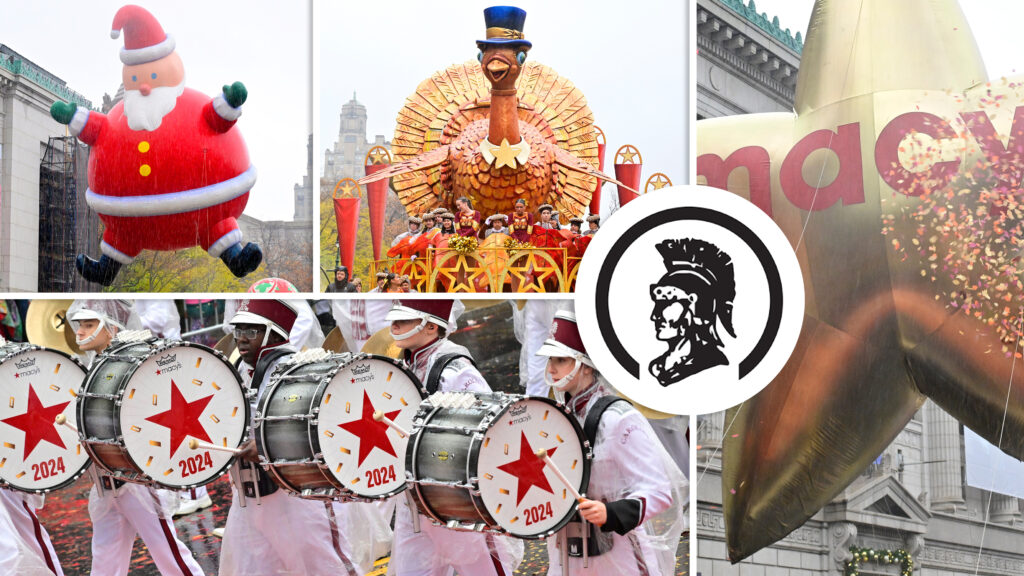The first of three consecutive years that Drum Corps International hosted the World Championships in Orlando, also marked a shocking historical first as fans witnessed a tie for first place between Phantom Regiment and the Blue Devils.
The tie was even more shocking after Phantom Regiment had placed all the way down in fourth during the World Championship Quarterfinals, before moving up to third in the Semifinals, and peaking at just the right time to tie the Blue Devils for first in the Finals.
Among the memorable visual moments of 1996 was a painted stage set showing a cow wearing a Cadets uniform at the end of the corps playing Copland’s “Hoedown” from “Rodeo.” At the time, a nationwide “Beef, It’s What’s For Dinner,” marketing campaign was featuring the same music, and so the audience shouted “Beef!” when the painting appeared. Another well-loved effect was the continuous moving of 32 chess pieces during Carolina Crown’s “Chess…and the Art of Strategy” production.

After four straight years as a top-12 finalist corps, Blue Knights dropped to 13th in 1995, before storming back into 12th place at the 1996 World Championships with a production titled, “The Music of Ron Nelson.”
Nelson was a student of composer Howard Hanson at the Eastman School of Music at the University of Rochester, and was the first composer to win the three major band composition prizes for the same composition. In the Los Angeles Daily News earlier in 1996, famed conductor Leonard Slatkin said, “Nelson is the quintessential American composer. He has the ability to move between conservative and newer styles with ease. The fact that he’s a little hard to categorize is what makes him interesting.”
Blue Knights’ 1996 show started with Nelson’s “Rocky Point Holiday” from 1969, a piece that might be best known to drum corps fans as one that the Garfield Cadets utilized in winning their first DCI World Championship title in 1983.
Nelson composed the piece during a family vacation to Rocky Point, Rhode Island, a seaside resort that until 1985 was the home of an amusement park. The thrills of the park inspired the almost manic forward propulsion of the piece. Commissioned by the University of Minnesota Concert Band for a tour of Russia, it was Nelson’s first major work originally written for wind bands.

The show opened with the Blue Knights color guard members spinning hand-painted flags with blue swirls, which were soon traded for other flags of various shades of blue. These hand-painted flags were becoming a Blue Knights trademark, and would be witnessed in a multitude of the corps’ future productions. By the end of the piece, those flags had evolved to vivid swatches of burgundy, blue, orange, and white. Performers capped off the segment by forming a company front that dissolved into a jagged form reminiscent of the Rocky Mountains that tower over the corps’ hometown of Denver.
The last two-thirds of the show was dedicated to “Sonoran Desert Holiday,” written in 1994 for the Air Force Band of Flight in Dayton, Ohio. Like “Rocky Point,” it was composed originally for wind band and not orchestra, unlike so many of his other famous band works.
Nelson received inspiration for the piece from living just a few hours north of the Arizona section of the Sonoran Desert. According to the composer, the work is “the final in a series of eight overtures which began in 1953 … there are gestures and allusions to night, to sunrise, to Native American and Hispanic influences, to wide open southwestern expanses, and to the remarkable variety of holiday experiences available in this diverse and beautiful part of our country.”
The piece opened with nature sounds, including a front ensemble member playing two handheld cricket sound devices. Seven long banners of muted dark reddish browns and yellow were maneuvered amongst and over one another until coming together in one large image depicting a blazing sun over the desert. After that, one-third of the color guard members spun half circles that appeared to be segments of wagon wheels, while the others bordered those members performing with sabers and rifles.
Flags of pale orange and peach tones introduced the central ballad segment of the work. During a standstill performance of this melody, the field filled with a variety of pastel earth-toned flags, the colors of the desert at sunrise or sunset. Once again, a mountain scene was formed in the drill, this time with the horns and drums in a partial triangular block. Draping their flag silks toward the field, color guard members made a continuous wall while outlining the form in an inverted “V.”
The final segment of the piece introduced flags of various faded purples that somewhat resembled a cross between the cornea of an eye and the sun’s corona. The flag bearers formed a large oval through which moved a triangular block of brass players.
The final half-minute of the production was enlivened with more hand-painted flags, each of a different design, and each appearing to depict rock strata of the desert, baking under the hot sun.
1996 Overview

Michael Boo was a member of the Cavaliers from 1975-1977. He wrote about the drum corps activity for more than 35 years while serving as a staff writer for various Drum Corps International projects. During his lifetime Boo wrote for numerous other publications including an honors-winning book on the history of figure skating. He also was an accomplished composer. Boo passed away in 2020 and was inducted into the DCI Hall of Fame posthumously in 2021.





